Related Research Articles

Chardonnay is a green-skinned grape variety used in the production of white wine. The variety originated in the Burgundy wine region of eastern France, but is now grown wherever wine is produced, from England to New Zealand. For new and developing wine regions, growing Chardonnay is seen as a 'rite of passage' and an easy entry into the international wine market.

Sparkling wine is a wine with significant levels of carbon dioxide in it, making it fizzy. While it is common to refer to this as champagne, European Union countries legally reserve that word for products exclusively produced in the Champagne region of France. Sparkling wine is usually either white or rosé, but there are examples of red sparkling wines such as the Italian Brachetto, Bonarda and Lambrusco, and the Australian sparkling Shiraz. The sweetness of sparkling wine can range from very dry brut styles to sweeter doux varieties.

Pinot noir or Pinot nero is a red-wine grape variety of the species Vitis vinifera. The name may also refer to wines created predominantly from pinot noir grapes. The name is derived from the French words for pine and black. The word pine alludes to the grape variety having tightly clustered, pinecone–shaped bunches of fruit.

Pinot blanc or Pinot bianco is a white wine grape. It is a point genetic mutation of Pinot noir. Pinot noir is genetically unstable and will occasionally experience a point mutation in which a vine bears all black fruit except for one cane which produces white fruit.
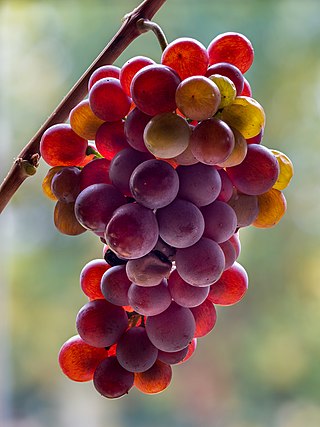
Pinot gris, Pinot grigio or Grauburgunder is a white wine grape variety of the species Vitis vinifera. Thought to be a mutant clone of the pinot noir variety, it normally has a pinkish-gray hue, accounting for its name, but the colors can vary from blue-gray to pinkish-brown. The word pinot could have been given to it because the grapes grow in small pinecone-shaped clusters. The wines produced from this grape also vary in color from a deep golden yellow to copper and even a light shade of pink, and it is one of the more popular grapes for skin-contact wine.

The Piave is a river in northern Italy. It begins in the Alps and flows southeast for 220 kilometres (140 mi) into the Adriatic Sea near the city of Venice. One of its tributaries is the Boite.
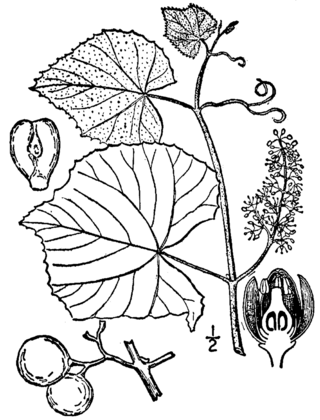
Ampelography is the field of botany concerned with the identification and classification of grapevines, Vitis spp. Traditionally this has been done by comparing the shape and colour of the vine leaves and grape berries; more recently the study of vines has been revolutionised by DNA fingerprinting.

Italian wine is produced in every region of Italy. Italy is the world's largest wine producer, as well as the country with the widest variety of indigenous grapevine in the world, with an area of 702,000 hectares under vineyard cultivation, and contributing a 2013–2017 annual average of 48.3 million hl of wine. In 2018 Italy accounted for 19 per cent of global production, ahead of France and Spain. Italian wine is both exported around the world and popular domestically among Italians, who consume an average of 42 litres per capita, ranking fifth in world wine consumption.

The Municipality of Brda is a municipality in western Slovenia. It is located in the Slovenian Littoral region, extending from the Italian border to the Soča River. It is bounded by Sabotin Hill to the east and Korada Hill to the north.

Romania is one of the world's largest wine producers and fifth-largest among European wine-producing countries, after Italy, France, Spain, and Germany. Similar in size to wine-producing countries such as Chile and Portugal but lesser-known on the world wine stage. In 2018 it produced around 5.2 million hectolitres of wine. In recent years, Romania has attracted many European business people and wine buyers, due to the affordable prices of both vineyards and wines compared to other wine-producing nations such as France, Germany, and Italy.
Breganze is a town in the province of Vicenza, Veneto, Italy. It is northeast of Via Romea. During World War II, the Germans were on one side of the river and the Allies were on the other, and a firefight occurred across the river.
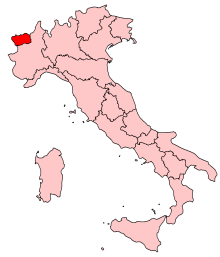
The Valle d'Aosta DOC is an Italian denominazione di origine controllata located in the Aosta Valley of north-west Italy. Surrounded by the Alps, the Valle d'Aosta is home to the highest elevated vineyards in all of Europe. The principal winemaking region of the Valle d'Aosta is found along the eastern banks of the Dora Baltea river with the city of Aosta serving as the central winemaking location. The region is divided into three main vineyard areas; the upper valley, Valdigne, the central valley and the lower valley,. To the south is the winemaking region of Piedmont. The Valle d'Aosta is Italy's smallest winemaking region both in terms of size and production with only about 330,000 cases produced annually in the region and only 36,000 cases produced under the DOC label. Seventy five percent of the area's production is red wine made mostly from the Pinot noir, Gamay and Petit Rouge varieties. A white wine is made from the indigenous Prié blanc grape by the cooperative of Blanc de Morgex et de La Salle.

Lombardy wine is the Italian wine produced in the Lombardy region of north central Italy. The region is known particularly for its sparkling wines made in the Franciacorta and Oltrepò Pavese areas. Lombardy also produces still red, white and rosé wines made from a variety of local and international grapes, including Nebbiolo wines in the Valtellina region and Trebbiano di Lugana white wines produced with the Chiaretto style rosé along the shores of Lake Garda. The wine region currently has 22 denominazione di origine controllata (DOC), 5 denominazione di origine controllata e garantita (DOCG) and at least 13 indicazione geografica tipica (IGT) designations. The main cities of the region are Milan, Bergamo and Brescia. The region annually produces around 1.3 million hectolitres of wine, more than the regions of Friuli-Venezia Giulia, Marche, Trentino-Alto Adige/Südtirol and Umbria.

Friuli-Venezia Giulia wine is wine made in the northeastern Italian region of Friuli-Venezia Giulia. There are 11 denominazione di origine controllata (DOC) and 3 denominazione di origine controllata e garantita (DOCG) in the Friuli-Venezia Giulia area. The region has 3 indicazione geografica tipica (IGT) designations Alto Livenza, delle Venezie and Venezia Giulia. Nearly 62% of the wine produced in the region falls under a DOC designation. The area is known predominantly for its white wines, which are considered some of the best examples of Italian wine in that style. Along with the Veneto and Trentino-Alto Adige, the Friuli-Venezia Giulia forms the Tre Venezie wine region, which ranks with Tuscany and Piedmont as Italy's world class wine regions.

Slovenia has more than 28,000 wineries making between 80 and 90 million litres annually from the country's 22,300 ha of vineyards. About 75% of the country's production is white wine. Almost all of the wine is consumed domestically with only 6.1 million L a year being exported—mostly to the United States, Bosnia and Herzegovina, Croatia, and lately the Czech Republic. Most of the country's wine production falls under the classification of premium (vrhunsko) wine with less than 30% classified as basic table wine (namizno vino). Slovenia has three principal wine regions: the Drava Wine-Growing Region, the Lower Sava Wine-Growing Region, and the Littoral Wine-Growing Region.
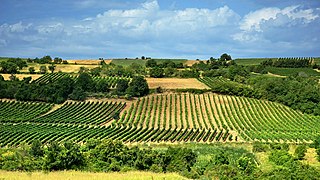
There are nearly 70,000 hectares of vineyards in Serbia, producing about 425,000 tons of grapes annually. The majority of Serbian wines are produced in local wineries.
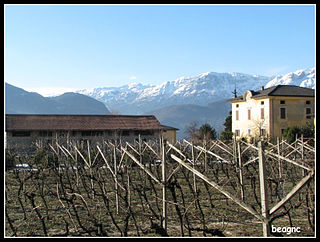
Trento DOC is an appellation for white and rosé sparkling wine made in Trentino, Italy. Trentinos developed this appellation, the second in the world after Champagne, to ensure quality and distinction. Only Chardonnay, Pinot noir, and Pinot Meunier with Pinot blanc are permitted, and they must be grown in a well-defined area within the Province of Trento.

Polish wine viticulture and origins have a history dating back to the nation's founding in the tenth century under the Piast dynasty. Like other old world wine producers, many traditional grape varieties still survive in Poland, perfectly suited to their local wine hills. The most popular varieties of grapes for the production of red wine are Regent, Rondo, Pinot Noir, Maréchal Foch, Cabernet Cortis, Tryumf Alzacji, Cascade, and Dornfelder. For white wine production, Solaris, Riesling, Seyval Blanc, Pinot Gris, Johanniter, Jutrzenka, Hibernal, Aurora, Bianka, Traminer, and Siberia are mostly used. Following the Second World War, most wineries were nationalized under the Polish People's Republic communist regime. After the collapse of communism and return to capitalism, the market economy returned, international wine companies moved back in and a period of consolidation followed. Modern wine-production methods have taken over in the larger wineries, and EU-style wine regulations have been adopted, guaranteeing the quality of the wine. Today, wine production in Poland is an industry with 151 officially registered wineries to sell and produce grape table wines in Poland as defined by the national wine laws that came into being in 2008 and were updated later on.

Sylvin Farms Winery is a winery in the Germania section of Galloway Township in Atlantic County, New Jersey. The vineyard was first planted in 1977, and opened to the public in 1985. Sylvin Farms has 11 acres of grapes under cultivation, and produces 1,000 cases of wine per year. The winery’s name is an amalgamation of Sylvia and sylvan, reflecting the owner's wife's name and the surrounding Pine Barrens, respectively.

Jordanian wine is produced by two wineries, with an annual production of nearly a million bottles a year. Jordan has a long tradition of wine making, dating as far back as Nabatean times.
References
- ↑ Peri Bigogno
- ↑ Talento Avvinare 2011/07/08